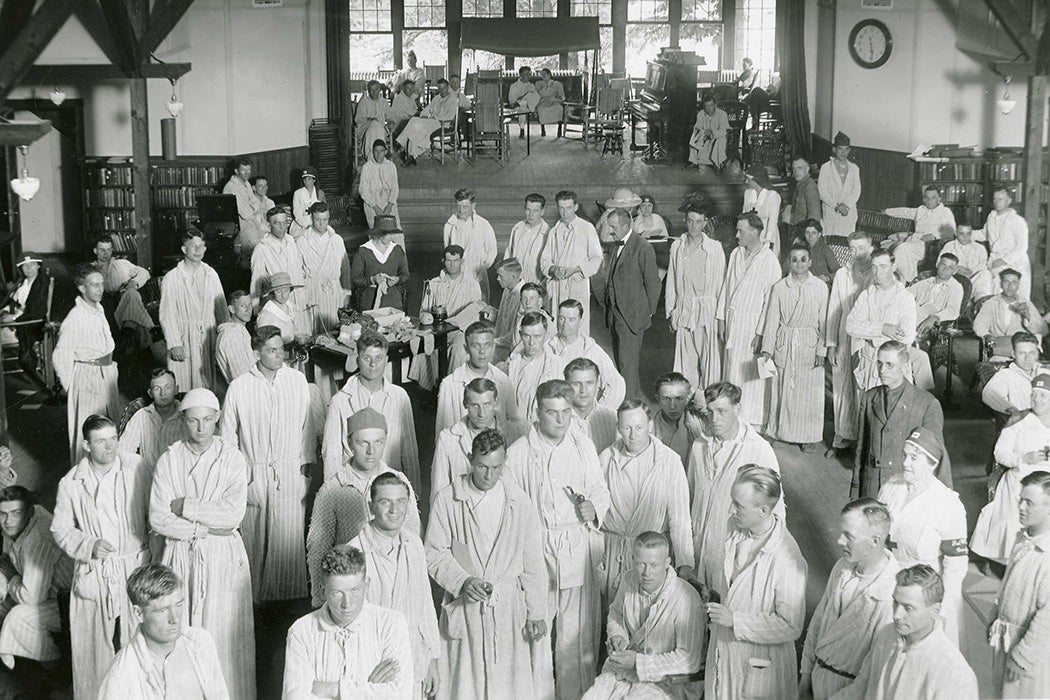January 1904 marked the opening of a year-long debate in the United States Congress over the allocation of resources to build a hospital. While such debates are commonplace in politics, the money under discussion was to be earmarked for a military hospital for the “treatment of special cases” and training of medical practitioners—the future Walter Reed Army General Hospital.
Historian Jessica L. Adler writes that the creation of Walter Reed came at a time of systemic change, when ideas about medicine and illness were shifting. The funding debates “took place during a societal shift toward an urban, industrial economy and a scientific understanding of disease, which brought about an increasing reliance on hospitals as ideal environments for medical treatment.”
While it was difficult to justify a new hospital thanks to declining admission rates (the Spanish-American War had been over for more than five years), the need to treat and manage contagious diseases beyond the battlefields remained acute in the early twentieth century. During the war, more soldiers had died of yellow fever and typhoid than in battle. After the war, the army endured a scandal caused by their own mishandling of soldiers who were kept in isolation in an attempt to prevent the spread of those illnesses to the US mainland. Some 250 veterans of the Spanish-American War perished in quarantine at Camp Wikoff on Long Island.
“Large, permanent army general hospitals like Walter Reed were, in part, products of an increasing desire to address the challenges of diseases while avoiding mishaps like the one at Camp Wikoff,” Adler writes.
Walter Reed General Hospital, while still a military institution, represented a step up from makeshift or temporary hospitals that had been commonplace during the Civil War, where injured and sick soldiers often didn’t receive sufficient care. More, it offered the military “a means of maintaining and centralizing control over its personnel.” Building the new hospital near the nation’s capital would offer army doctors “an opportune locus of control,” she explains.
In fact, writes Adler, “the desire for centralized control” was one of the justifications for a general hospital near the federal capital. By stylizing the medical facility as a base for “the treatment of special cases,” officials were arguing for a facility, the personnel, and the equipment to treat the types of “illness and injury [that] are constantly arising in the military service.” Those conditions met, they would be able to “save the men to the service” and reduce the number of officers seeking discharge due to disability, all under the oversight of one individual, the Army Surgeon General.
Quoting Edgar Erskine Hume, a member of the Army Medical Department from 1917 through 1952, Adler writes that the ethics behind the creation of Walter Reed weren’t humanitarian but based on “increased military efficiency and the application of sanitary principles adapted to the requirements of the military machine to assist in the struggle for victory.” The needs of the military came first, and what the military needed was a means of treating the wounded such that they could be returned to service.
Weekly Newsletter
That the hospital would serve as a symbol of American superiority didn’t hurt the cause. “As it sought structure, the US Army cast its eye abroad to the military models of powerful European countries and found medical complexes where hospital services were combined with medical schools,” Adler explains. And as the US expanded its sphere of influence, the hospital would serve as a medical metropole: “American military doctors could pursue health research in countries throughout Latin America then bring newfound knowledge to a Washington, DC medical complex.”
The funding of Walter Reed “marked a defining moment in the allocation of government-sponsored benefits to soldiers,” writes Adler. But it also served as an exemplar of the “pragmatic tenets of the ethics of military medicine that placed considerations regarding army efficiency and the necessity of trimming spending on veterans’ pensions at least on par with individual patient care.”







